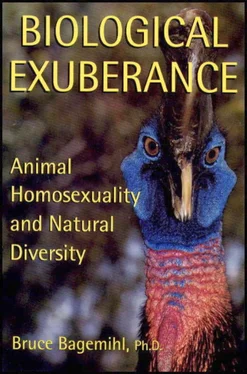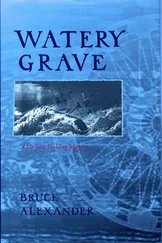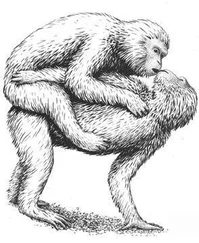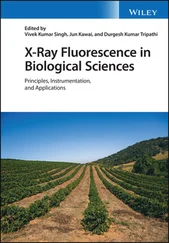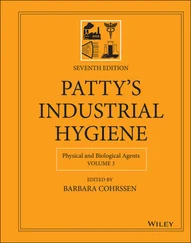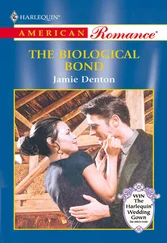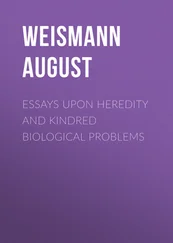Dominey, W. J. (1980) “Female Mimicry in Male Bluegill Sunfish—a Genetic Polymorphism?” Nature 284:546–48.
Duyvené de Wit, J. J. (1955) “Some Observations on the European Bitterling ( Rhodeus amarus ).” South African Journal of Science 51:249–51.
Fabricius, E. (1953) “Aquarium Observations on the Spawning Behavior of the Char, Salmo alpinus.” Institute of Freshwater Research, Drottningholm , report 35:14–48.
Fabricius, E., and K.-J. Gustafson (1955) Observations on the Spawning Behavior of the Grayling, Thymallus thymallus (L.).” Institute of Freshwater Research, Drottningholm , report 36:75–103.
———(1954) “Further Aquarium Observations on the Spawning Behavior of the Char, Salmo alpinus L.” Institute of Freshwater Research, Drottningholm, report 35:58-104.
Fabricius, E., and A. Lindroth (1954) “Experimental Observations on the Spawning of the Whitefish, Coregonus lavaretus L., in the Stream Aquarium of the Hölle Laboratory at River Indalsälven.” Institute of Freshwater Research, Drottningholm, report 35:105–12.
Greenberg, B. (1961) “Spawning and Parental Behavior in Female Pairs of the Jewel Fish, Hemichromis bi-maculatus Gill.” Behavior 18:44–61.
Morris, D. (1952) “Homosexuality in the Ten-Spined Stickleback.” Behavior 4:233–61.
Petravicz, J. J. (1936) “The Breeding Habits of the Least Darter, Microperca punctulata Putnam.” Copeia 1936:77–82.
Schlosberg, H., M. C. Duncan, and B. Daitch (1949) “Mating Behavior of Two Live-bearing Fish Xiphophorous helleri and Platypoecilus maculatus.” Physiological Zoology 22:148–61.
Schlupp, I., J. Parzefall, J. T. Epplen, I. Nanda, M. Schmid, and M. Schartl (1992) “Pseudomale Behavior and Spontaneous Masculinization in the All-Female Teleost Poecilia formosa (Teleostei: Poeciliidae).” Behavior 122:88–104.
Insects
Aiken, R. B. (1981) “The Relationship Between Body Weight and Homosexual Mounting in Palmacorixa nana Walley (Heteroptera: Corixidae).” Florida Entomologist 64:267–71.
Alcock, J. (1993) “Male Mate-Locating Behavior in Two Australian Butterflies, Anaphaeis java teutonia (Fabricius) (Pieridae) and Acraea andromacha andromacha (Fabricius) (Nymphalidae).” Journal of Research on the Lepidoptera 32:1–7.
Alcock, J., and S. L. Buchmann (1985) “The Significance of Post-Insemination Display by Males of Centris pallida (Hymenoptera: Anthophoridae).” Zeitschrift für Tierpsychologie 68:231–43.
Alexander, R. D. (1961) “Aggressiveness, Territoriality, and Sexual Behavior in Field Crickets (Orthoptera: Gryllidae).” Behavior 17:130–223.
Allsopp, P. G., and T. A. Morgan (1991) “Male-Male Copulation in Antitrogus consanguineus (Blackburn) (Coleoptera: Scarabaeidae).” Australian Entomological Magazine 18(4):147–48.
Anderson, J. R., A. C. Nilssen, and I. Folstad (1994) “Mating Behavior and Thermoregulation of the Reindeer Warble Fly, Hypoderma tarandi L. (Diptera: Oestridae).” Journal of Insect Behavior 7:679–706.
Arita, L. H., and K. Y. Kaneshiro (1983) “Pseudomale Courtship Behavior of the Female Mediterranean Fruit Fly, Ceratitis capitata (Wiedemann).” Proceedings of the Hawaiian Entomological Society 24:205–10.
Barrows, E. M., and G. Gordh (1978) “Sexual Behavior in the Japanese Beetle, Popillia japonica, and Comparative Notes on Sexual Behavior of Other Scarabs (Coleoptera: Scarabaeidae).” Behavioral Biology 23:341–54.
Barth, R. H., Jr. (1964) “Mating Behavior of Byrsotria fumigata (Guerin) (Blattidae, Blaberinea).” Behavior 23:1–30.
Bennett, G. (1974) “Mating Behavior of the Rosechafer in Northern Michigan (Coleoptera: Scarabaeidae).” Coleopterists Bulletin 28:167–68.
Benz, G. (1973) “Role of Sex Pheromone and Its Insignificance for Heterosexual and Homosexual Behavior of Larch Bud Moth.” Experientia 29:553–54.
Berlese, A. (1909) Gli insetti: loro organizzazione, sviluppo, abitudini, e rapporti coll’uomo. Vol. 2 ( Vita e cos-tumi ). Milano: Società Editrice Libraria.
Bologna, M. A., and C. Marangoni (1986) “Sexual Behavior in Some Palaearctic Species of Meloe (Coleoptera, Meloidae).” Bollettino della Società Entomologica Italiana 118(4–7):65–82.
Bristowe, W. S. (1929) “The Mating Habits of Spiders with Special Reference to the Problems Surrounding Sex Dimorphism.” Proceedings of the Zoological Society of London 1929:309–58.
Brower, L. P., J. V. Z. Brower, and F. P. Cranston (1965) “Courtship Behavior of the Queen Butterfly, Danaus gilippus berenice (Cramer).” Zoologica 50:1-39.
Cane, J. H. (1994) “Nesting Biology and Mating Behavior of the Southeastern Blueberry Bee, Habropoda laboriosa (Hymenoptera: Apoidea).” Journal of the Kansas Entomological Society 67:236-41.
Carayon, J. (1974) “Insémination traumatique hétérosexuelle et homosexuelle chez Xylocoris maculipennis (Hem. Anthocoridae).” Comptes rendus hebdomadaires des séances de l’Académie des Sciences, Série D—Sciences naturelles 278:2803–6.
———(1966) “Les inséminations traumatiques accidentelles chez certains Hémiptères Cimicoidea.” Comptes rendus hebdomadaires des séances de l’Académie des Sciences, Série D—Sciences naturelles 262:2176–79.
Castro, L., M. A. Toro, and C. Fanjul-Lopez (1994) “The Genetic Properties of Homosexual Copulation Behavior in Tribolium castaneum: Artificial Selection.” Genetics Selection Evolution (Paris) 26:361–67.
Constanz, G. (1973) “The Mating Behavior of a Creeping Water Bug, Ambrysus occidentalis (Hemiptera: Naucoridae).” American Midland Naturalist 92:230–39.
Cook, R. (1975) “‘Lesbian’ Phenotype of Drosophila melanogaster?” Nature 254:241-42.
David, W. A. L., and B. O. C. Gardiner (1961) “The Mating Behavior of Pieris brassicae (L.) in a Laboratory Culture.” Bulletin of Entomological Research 52:263–80.
Dunkle, S. W. (1991) “Head Damage from Mating Attempts in Dragonflies (Odonata: Anisoptera).” Entomological News 102:37–41.
Dyte, C. E. (1989) “Gay Courtship in Medetera.” Empid and Dolichopodid Study Group Newsheet 6:2–3.
Field, S. A., and M. A. Keller (1993) “Alternative Mating Tactics and Female Mimicry as Post-Copulatory Mate-Guarding Behavior in the Parasitic Wasp Cotesia rubecula.” Animal Behavior 46:1183–89.
Finley, K. D., B. J. Taylor, M. Milstein, and M. McKeown (1997) “dissatisfaction, a Gene Involved in Sex-Specific Behavior and Neural Development of Drosophila melanogaster.” Proceedings of the National Academy of Sciences 94:913–18.
Fleming, W. E. (1972) Biology of the Japanese Beetle. U.S. Department of Agriculture Technical Bulletin no. 1449. Washington, D.C.: Agricultural Research Service.
Fletcher, L. W., J. J. O’Grady Jr., H. V. Claborn, and O. H. Graham (1966) “A Pheromone from Male Screwworm Flies.” Journal of Economic Entomology 59:142–43.
Forsyth, A., and J. Alcock (1990) “Female Mimicry and Resource Defense Polygyny by Males of a Tropical Rove Beetle, Leistotrophus versicolor (Coleoptera: Staphylinidae).” Behavioral Ecology and Sociobiology 26:325–30.
Gadeau de Kerville, H. (1896) “Perversion sexuelle chez des Coleopteres mâles.” Bulletin de la Société Entomologique de France 1896:85–87.
Читать дальше
